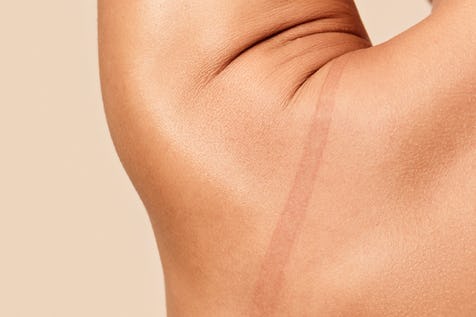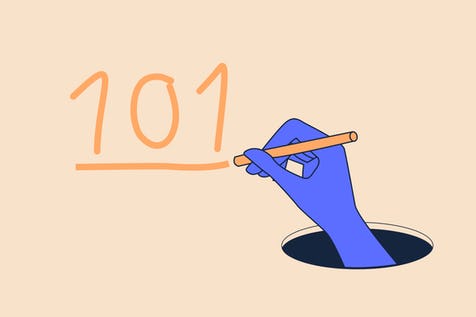Amongst the sea of menstrual cycle conversations is an island filled with questions about the different levels of pain linked to the female reproductive organs. For some, ovulation pain can be a monthly occurrence. This pain can range from being a light twinge to a sharp cramp, or even a pulsating muscular pain felt in the lower abdomen. Here are some of the possible symptoms of ovulation pain, and how they relate to various conditions that end up knocking on our wombs’ door.
Ovulation begins in the ovaries. There are two of them: one on either side of the uterus. In each ovary, there are tiny eggs, individually wrapped in their own sac called a follicle (1). Each follicle takes several months to grow and develop, slowly producing estrogen along the way. Roughly two weeks before a menstrual bleed, a singular dominant follicle is chosen to grow to its full capacity and release its egg into the fallopian tube (2). This is called ovulation. This egg will stay in the fallopian tube for roughly 12-24 hours, waiting to meet a sperm. Then, it will either naturally degrade or successfully fertilise and move into the uterus to implant for pregnancy (3).
What are the symptoms and how does it feel?
Not every woman will feel ovulation pain. If they do, it is often felt on varying levels of severity. Sometimes, women experience a sharp, electric shock-like sensation felt in the left or right side of the stomach, potentially followed by cramping. This cramping can last anywhere from a few minutes to a few days. Some women may notice some vaginal bleeding. On the whole, ovulation pain tends to be harmless.
If these sensations of pain increase or are accompanied by other symptoms, it can be an indicator of further underlying medical conditions. Many of these often get misdiagnosed or ignored both on a professional and personal level. It’s always good to pay attention to your whole body and notice changes in body temperature, bowel movements, urinary functions, and pains elsewhere.
What are the possible causes?
The sharp one-sided pain felt during ovulation is understood to be the wall of the follicle sac rupturing to release the egg. This is accompanied by contractions of the fallopian tube helping the egg move across from the ovary. In addition to this, it is thought that the blood and other fluids from the ruptured follicle can cause irritation of the nerves in the abdominal cavity. This can be the reason for spotting or bleeding (4). There are also several other possible reasons why pain can be felt, linked to a variety of more severe conditions (5). If you find yourself identifying with any of the below, it’s wise to keep track of your symptoms using the inne app and consult a doctor with your documented information.
Ovarian Cysts
These are fluid-filled sacs that can develop on the ovary. More often than not, they are completely painless and go unnoticed. However, if a cyst continues to grow, it can cause additional pain. Symptoms may including abdominal bloating and swelling, discomfort in the lower back and thighs, and painful bowel movements (6).
Endometriosis
This is a condition that arises when tissue similar to the lining of the uterus grows in other places such as the pelvis, Fallopian tubes, and ovaries, producing its own estrogen and progesterone (7). Endometriosis can cause pelvic pain and cramps in the lower back and abdomen. The endometrium, the innermost layer of the uterus, is responsible for thickening the uterine lining, breaking it down, and bleeding during each cycle. However, this tissue and blood have nowhere to go and become irritated, resulting in scar tissue and adhesions, causing painful inflammations. Women who have had a cesarean delivery or surgery on their lower abdomen may be prone to similar adhesions around their scars. Therefore, it’s important to keep an eye on any possible symptoms (8).
Ectopic Pregnancy
This occurs when the newly released egg meets the sperm in the fallopian tubes; however, instead of moving into the uterus to grow, the embryo implants itself in the fallopian tube or outside the uterus. This can cause severe and harmful side effects (9). If you have one-sided pain in your pelvis or your abdomen and think you may be pregnant, it’s good to investigate further.
Sexually Transmitted Infections
Examples of these include chlamydia, gonorrhea, and Human Papilloma Virus (HPV).These conditions are known to cause inflammation and scarring around the fallopian tubes, leading to ovulation pain (10). Because STIs can go undetected, it’s always good to have a bi-annual check-up and note any other symptoms, including pain during sex, bleeding after sex, or a change in the smell or appearance of your cervical fluid.
How to relieve ovulation pain
Here are a few gentle tips that can help with ovulation pain, focusing on the pelvic area and encouraging the release of tension.
Heat
Understood to relax muscles and ease tension, heat can potentially ease ovulation pain. Some suggestions include a hot bath, a warm water bottle or a heat pad placed on your lower back or the front of your belly (11).
Movement
While this may seem like the last thing you want to do when you’re in pain, moving your body can be a great way to get blood moving and release tight pain areas. You can try restful floor stretches to ease the tension around the pelvis. Examples of this include lying on your back with your legs vertical against a wall, and slowly bending your knees and widening the space around your groin (11).
Breathing
This may sound simple, but consciously focusing on your inhales and exhales when you are struggling with pain can be a steadying and calming exercise. Even if it’s just for 3 minutes, give it a try in a space where you feel comfortable and free of disruptions.
In case your pain is persistent or severe, and you recognise it may be linked to other symptoms, including Urinary Tract Infections, painful or uncomfortable bowel movements, or pain during sex, it is advisable to consult your doctor.
How to better track my ovulation pain?
The inne minilab can predict and confirm your time of ovulation by tracking your progesterone levels throughout your cycle. The app is equipped with a symptom-tracking feature, making it super simple to log your observations about body pain and cervical mucus. This enables you to observe patterns and understand how your pain is correlating to the current state of your cycle.
Having a map of when your energy levels and overall mood will change in accordance with your body’s pain and discomfort can provide you with a greater understanding of your body and a toolbox of options for self-care. Predicting your cycle will help you know when to schedule cosy nights or bigger events, knowing what time of the month they’ll suit you best.
References
1. Gougeon A. Intragonadal regulation of human follicular genesis: facts and hypotheses. Ann Endocrinol (Paris). 1994, pages: 63-73.
2. Wilcox AJ, Baird DD, Weinberg CR. Time of implantation of the conceptus and loss of pregnancy. New England Journal of Medicine. 1999, pages: 1796–9
3. Reed BG, and Carr BR. The Normal Menstrual Cycle and the Control of Ovulation, 2000
4. Marinho AO, Sallam HN, Goessens L, Collins WP, Campbell S. Ovulation side and occurrence of mittelschmerz in spontaneous and induced ovarian cycles. British medical journal (Clinical research ed.). 1982 Page: 632
5. Barad DH. Pelvic Pain Center for Human Reproduction, Mar 2020
6. Farahani L, Morgan S, Datta S. Benign Ovarian Cysts, Obstetrics, Gynaecology & Reproductive Medicine, 2017
7. Parasar P, Ozcan P, Terry K, Endometriosis: Epidemiology, Diagnosis and Clinical Management, 2017, Curr Obstet Gynecol Rep. 2017 Mar, pages: 34–41.
8. Khachani, I., Adib, A. F., & Bezad, R. (2017, February 23). Cesarean scar endometriosis: An uncommon surgical complication on the rise? Case report and literature review. Case Reports in Obstetrics and Gynecology, 2017
9. Taran FA, Kagan KO, Hübner M, Hoopmann M, Wallwiener D, Brucker S. The Diagnosis and Treatment of Ectopic Pregnancy. Dtsch Arztebl Int. 2015, pages: 693-705.
10. Tsevat DG, Wiesenfeld HC, Parks C, Peipert JF. Sexually transmitted diseases and infertility. Am J Obstet Gynecol. 2017
11. Barad DH. Pelvic Pain, MSD Manuals, March 2020, online article consulted July 2020




